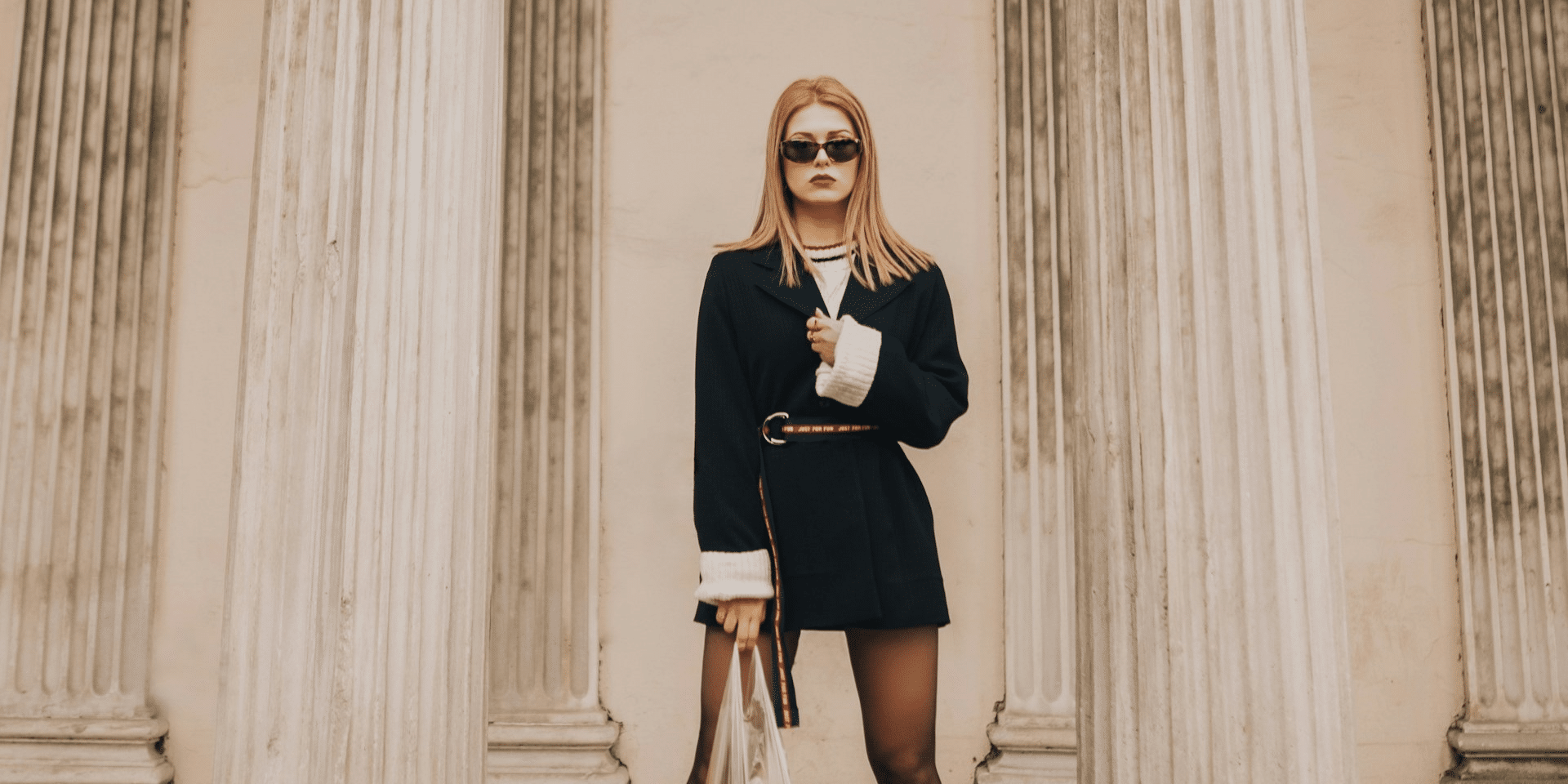Music and fashion have always shared a symbiotic relationship, with each influencing and amplifying the other across decades. This interplay has been a cultural phenomenon, driving global trends, shaping identities, and inspiring creativity. From iconic musicians redefining style to festivals that serve as fashion showcases, the connection between these two art forms goes beyond aesthetics—it is a reflection of societal shifts, innovation, and individuality. In this article, we explore the intricate relationship between music and fashion, examining its historical roots, modern manifestations, and ongoing influence.
Read also: How to Take Care of Your Skin with a Daily Skincare Routine
Influence of Music Genres on Fashion
Music genres have long dictated fashion trends, creating visual identities that define not just the music, but the culture surrounding it.
Rock and Punk: Rebellion Through Fashion
Rock and punk music have historically been synonymous with rebellion and countercultural movements. The fashion associated with these genres reflects this ethos—leather jackets, ripped jeans, band t-shirts, and studded belts have become iconic symbols of defiance. Bands like The Ramones and The Sex Pistols pioneered this aesthetic, which continues to inspire contemporary fashion brands and subcultures. Modern iterations of punk fashion, such as the reimagined designs by Vivienne Westwood, show the enduring legacy of this music-inspired style.
Hip-Hop: Street Style Meets Luxury
Hip-hop culture revolutionized fashion by merging street style with luxury elements. Oversized clothing, sneakers, and bold accessories like chains and watches, often referred to as “bling,” became staples of the genre. Artists like Run-D.M.C. popularized Adidas tracksuits, while modern hip-hop figures like Kanye West and Travis Scott have further cemented the connection by launching their own fashion lines. Hip-hop’s influence has extended to high fashion, with collaborations between rappers and luxury brands like Gucci, Louis Vuitton, and Balenciaga.
Pop Music: Glamour and Innovation
Pop music, with its mainstream appeal, has been a significant driver of fashion trends. Icons such as Madonna, Britney Spears, and Lady Gaga have popularized bold, glamorous styles that resonate with fans. Lady Gaga’s meat dress, Britney’s schoolgirl outfit in the “…Baby One More Time” video, and Madonna’s cone bra are just a few examples of how pop artists have used fashion to make lasting cultural statements. Their styles often transcend music, influencing global fashion trends and inspiring runway designs.
Music Subcultures and Their Fashion Statements
Music subcultures create distinct visual identities, using fashion as a means of self-expression and community building.
Emo and Scene: A Blend of Emotion and Edge
The emo and scene subcultures, prominent in the early 2000s, are characterized by their dramatic and edgy fashion statements. Skinny jeans, band t-shirts, studded belts, and vibrant hair colors became defining elements. These styles reflected the emotional depth and individuality associated with emo and scene music, creating a sense of identity for fans. The influence of this subculture persists today, with elements of emo fashion reappearing in modern streetwear.
Goth: Dark Elegance
The goth subculture, deeply rooted in the music of bands like Bauhaus and The Cure, brought dark elegance to fashion. Black clothing, lace, velvet, corsets, and dramatic makeup became hallmarks of goth style. This aesthetic represents mystery, introspection, and a rejection of mainstream norms. High fashion designers, including Alexander McQueen and Rick Owens, have drawn inspiration from goth fashion, bringing its elements to the runway.
Iconic Musicians as Fashion Trendsetters
Some musicians transcend their roles as performers to become cultural icons, setting fashion trends that define entire eras.
David Bowie: The Androgynous Icon
David Bowie’s ever-evolving style redefined fashion and broke gender norms. His Ziggy Stardust persona showcased bold makeup, metallic jumpsuits, and futuristic designs, creating an avant-garde aesthetic that challenged societal conventions. Bowie’s influence continues to inspire designers and artists, solidifying his legacy as a fashion trailblazer.
Madonna: Reinventing Fashion
Madonna’s ability to reinvent her image has made her a perennial fashion icon. From her lace gloves and corsets in the 1980s to her collaborations with Jean Paul Gaultier, Madonna has consistently pushed fashion boundaries. Her fearless approach to style has influenced generations of pop stars, including Beyoncé, Rihanna, and Lady Gaga.
Kanye West: The Modern Innovator
Kanye West has transformed his influence in music into a powerful presence in fashion. Through his Yeezy brand, West has popularized minimalist designs, oversized silhouettes, and earthy tones. His work bridges the gap between streetwear and high fashion, reshaping modern aesthetics and setting new trends.
Music Festivals as Fashion Hubs
Music festivals are no longer just about music—they are global showcases for fashion, where attendees and performers alike influence trends.
Coachella: The Epitome of Festival Fashion
Coachella has become synonymous with bohemian and eclectic fashion. From flowy maxi dresses and fringe jackets to floral crowns and bold accessories, the festival’s aesthetic sets the tone for summer wardrobes worldwide. Brands often launch festival-inspired collections to capitalize on Coachella’s cultural impact.
Glastonbury: Where Alternative Meets Mainstream
Glastonbury, known for its diverse lineup, reflects a mix of alternative and mainstream fashion. Festival-goers embrace practical yet stylish looks, such as wellies, oversized sweaters, and statement outerwear. The eclectic nature of Glastonbury’s fashion mirrors its musical diversity, making it a significant cultural event.
Fashion in Music Videos and Performances
Music videos and live performances are powerful platforms for musicians to showcase their style, turning their visuals into iconic fashion statements.
Visual Albums as Artistic Expression
Visual albums, such as Beyoncé’s Lemonade and Kanye West’s Runaway, use fashion as a storytelling tool. Iconic outfits from these projects often influence red carpet trends and inspire high fashion collections, reinforcing the connection between music and style.
Stage Costumes: Amplifying the Artist’s Persona
Stage costumes often define an artist’s image and leave lasting impressions. Michael Jackson’s sequined glove and military jackets, Elton John’s flamboyant eyewear, and Lady Gaga’s avant-garde ensembles have become symbols of their artistic personas. These costumes set trends and inspire designers to incorporate theatrical elements into their work.
Collaborative Ventures Between Musicians and Fashion Brands
The partnership between musicians and fashion brands has become a lucrative and creative trend, blending musical influence with fashion innovation.
Branded Merchandise: Fandom Meets Fashion
Musicians use branded merchandise to connect with fans and expand their reach. Tour t-shirts, hoodies, and accessories often reflect an artist’s personal style, creating a sense of identity for fans. Artists like Billie Eilish and BTS have taken merchandising to new heights, with collections that resonate with global audiences.
Designer Collaborations: Where Music Meets High Fashion
Collaborations between musicians and fashion designers have resulted in some of the most memorable collections. Rihanna’s partnership with Fenty and Travis Scott’s collaboration with Nike showcase how musicians bring unique perspectives to the fashion industry, creating products that blend music and style seamlessly.
Read also: The Impact of Music on Work Productivity
Evolution of Fashion Trends Through Musical Eras
Music and fashion have evolved together through various eras, each defined by its own aesthetic and cultural movements.
The Disco Era: Glitter and Glam
The disco era of the 1970s celebrated extravagance and joy, with sequined jumpsuits, platform shoes, and metallic fabrics dominating the dance floors. Artists like Donna Summer epitomized this dazzling aesthetic, which continues to inspire retro fashion trends.
The Grunge Movement: Casual Cool
The 1990s grunge movement, led by bands like Nirvana and Pearl Jam, embraced a laid-back, unpolished style. Flannel shirts, ripped jeans, and combat boots reflected the rawness of the music and rejected the polished aesthetics of the 1980s. Grunge’s influence persists in modern streetwear and high fashion.
The powerful connection between music and fashion is a testament to their shared ability to shape culture, break boundaries, and inspire creativity. From iconic musicians and genre-defining styles to global festivals and collaborative ventures, the interplay between these two art forms continues to evolve. As music and fashion innovate and influence each other, they remain integral to the expression of individuality and the creation of trends that define generations.






